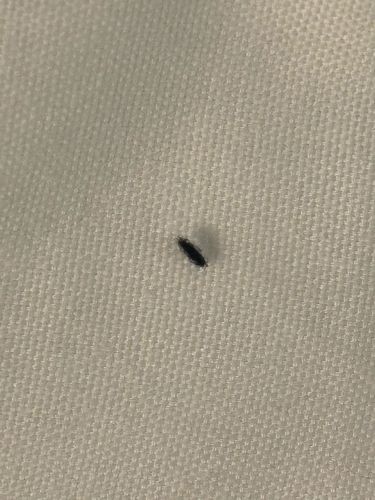Thrips or Springtail (likely a Thrips)
Scientific Name: Thysanoptera (for Thrips) / Collembola (for Springtails)
Order & Family: Order Thysanoptera (Thrips) or Order Collembola (Springtails)
Size: Typically 0.5 to 2 mm in length

Natural Habitat
Thrips are commonly found on plants, flowers, and fruits, both indoors (on houseplants) and outdoors. Springtails prefer damp, decaying organic matter, soil, leaf litter, and can sometimes be found indoors in moist areas like bathrooms or kitchens.
Diet & Feeding
Thrips are primarily phytophagous, feeding on plant sap, pollen, and fungal spores. Some are predatory. Springtails primarily feed on decaying organic matter, fungi, algae, and bacteria.
Behavior Patterns
Thrips are often found on host plants, where they feed by rasping plant tissues and sucking up the exuding sap. They can jump or fly short distances. Springtails are known for their ability to jump using a furcula (a tail-like appendage) and are active in moist environments.
Risks & Benefits
Thrips can be pests, causing damage to agricultural crops and ornamental plants, potentially transmitting plant viruses. Some predatory thrips are beneficial for pest control. Springtails are generally harmless to humans and are beneficial decomposers in ecosystems, but large indoor populations can indicate moisture problems.
Identified on: 9/30/2025